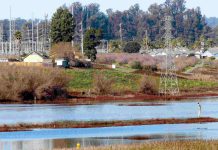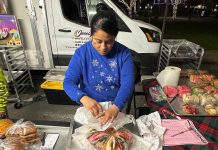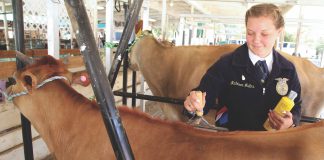WATSONVILLE—Gov. Gavin Newsom announced increased funding for the Farm to Family Program on April 29. The program directly connects farmers and ranchers to food banks to feed Californians around the state. The state intends to seed a $15 million campaign with $3.64 million to support the initiative.
Second Harvest Food Bank Santa Cruz County has been part of the Farm to Family Program for a while, but the increase in funds will greatly help the nonprofit, which has been overtasked since the outbreak of Covid-19.
“This will help cover the cost of produce… so we’ll be able to move the money around, use it to buy shelved items,” said Suzanne Willis, development and marketing officer at Second Harvest. “It’s going to ease the burden.”
When Covid-19 struck and county shelter-in-place orders went into effect, there was an immediate need in the community. People were suddenly without income and unable to afford food. Compounding this was the panic-buying happening in grocery stores.
An increase in calls to Second Harvest’s hotline and food distribution demand happened almost overnight. At the same time, the organization was losing about 50 percent of its workforce.
“You can’t double your output without staff,” Willis said. “We really relied on our volunteers.”
Willis estimated that before Covid-19 the organization distributed about 1,000 bags of food per week. Now they are sending out about 5,000 bags of produce alone. The cost of materials, staff working overtime, plus more delivery have all been factors in the organization’s financial strain.
Additionally, Second Harvest used to do “grocery rescue,” sourcing off-brand foods and undesired produce that stores usually didn’t sell. This has been affected by increased demand.
“We’re now in the open market… we are competing with Safeway and Nob Hill for food that we used to get at reasonable prices,” Willis said. “Just in the first month there was a 13 percent increase in the price of rice. How can a nonprofit compete?”
Despite the challenges, Second Harvest has had significant support from the community. The City of Watsonville granted the nonprofit a Community Development Block Grant of $200,000 and the organization qualified for a Payroll Protection Loan. The Feeding America Network and the Community Foundation have also stepped in to help.
In addition, Second Harvest received $200,000 in cash, $46,000 of in-kind donations including cleaning supplies and paper products, and a new forklift from Driscoll’s. The donation is part of the berry giant’s deployment of $4 million in charitable funds during the outbreak.
Willis said that plenty of individual donations have come in, too. People have sent in their Holiday Drive donations early and even granted the organization their $1,200 federal stimulus checks from the more than $2 trillion Coronavirus Aid, Relief, and Economic Security (CARES) Act.
“This community is so incredibly generous,” Willis said. “They are digging deep in their pockets, knowing there are people out there struggling.”
While the support has secured funding up until the summer, Second Harvest’s financial situation remains unstable. Before Covid-19 the food bank would distribute about 8 million pounds of product per year—this year they estimate those numbers will be closer to 13 or 14 million pounds, and 2021 will be similar.
This is why the organization continues to reach out to the community. Monetary support is welcome, as are food donations, which are now being taken at post offices in Aptos, Capitola and Watsonville.
Also, the National Guard members who have been helping the food bank during the outbreak will eventually be going home, and at that point Second Harvest will need volunteers again.
“We’re in this for the long haul,” Willis said. “We estimate an 18-month recovery period, at least. We’re not going to see an end to this any time soon.”













